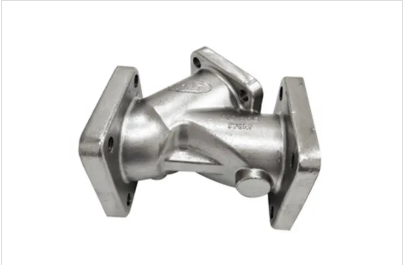Mobile:+86-311-808-126-83
Email:info@ydcastings.com
Design and Performance Analysis of Centrifugal Blower Impellers for Enhanced Efficiency
Understanding Centrifugal Blower Impellers Design and Applications
Centrifugal blowers are vital components in various industrial and commercial applications, serving the purpose of moving air or gases during processes that require consistent airflow. The heart of a centrifugal blower is its impeller, a crucial part that determines the device's efficiency, performance, and overall effectiveness. This article delves into the design and function of centrifugal blower impellers, examining their significance in different applications.
What is a Centrifugal Blower?
A centrifugal blower is a mechanical device that increases the pressure of air or gas by imparting kinetic energy to it through a rotating impeller. The design enables the conversion of kinetic energy into pressure energy, allowing for high air volumes to be moved efficiently. These blowers are widely utilized in various sectors including HVAC, wastewater treatment, industrial processes, and material handling.
The Role of Impellers in Centrifugal Blowers
The impeller is the rotating component of the centrifugal blower that directly influences its performance. By spinning rapidly, it imparts velocity to the air or gas entering the blower. As the air accelerates, it is forced outward due to centrifugal force, creating a low-pressure area at the center of the impeller, which draws in more air. This process continues, effectively increasing the air pressure as it exits the blower.
Design Characteristics of Impellers
Blade Design
The design of the impeller blades is critical to the efficiency of the blower. Impeller blades come in various shapes and configurations, including forward-curved, backward-curved, and straight blades. Each design offers different performance characteristics
- Forward-Curved Blades These blades are typically used in blowers requiring high volume at low pressure. They are more efficient at lower speeds but can have limitations in high-pressure applications. - Backward-Curved Blades These are favored for high-pressure applications. They are more efficient and capable of handling higher rotational speeds, making them suitable for various industrial uses. - Straight Blades Offering a compromise between the two, straight blades can provide both moderate pressure and volume, but may not perform as efficiently as the others in extreme conditions.
Impeller Diameter and Width
The size of the impeller must be appropriately matched to the required airflow and pressure specifications. Larger diameter impellers can move greater volumes of air, while width influences the velocity of the airflow. The correct sizing ensures that the blower operates within its optimal performance range, leading to energy savings and prolonged mechanical life.
centrifugal blower impeller

Material Selection
The materials used in impeller construction significantly impact durability and performance. Common materials include steel, aluminum, and plastic composites. Each material presents its advantages; for example
- Steel is robust and suitable for high-pressure applications but can be heavy. - Aluminum provides a lightweight option while balancing strength and resistance to corrosion. - Plastic Composites are often used in less demanding environments where weight reduction is a priority.
Applications of Centrifugal Blower Impellers
Centrifugal blowers with efficient impellers are utilized across diverse applications
- HVAC Systems Impellers play a key role in circulating air efficiently within heating, ventilation, and air conditioning systems, providing comfort in residential and commercial buildings.
- Material Handling In industries like agriculture and food processing, impellers move bulk materials, ensuring smooth transport of powders and granules.
- Wastewater Treatment Centrifugal blowers facilitate aeration processes by delivering the necessary oxygen to microorganisms, improving the efficiency of wastewater treatment plants.
- Industrial Processes Many manufacturing operations require precise airflow for cooling and drying applications, where high-performance impellers are crucial for maintaining operational efficiency.
Conclusion
The centrifugal blower impeller represents a critical element in the machinery that enables efficient air and gas movement across various industries. Understanding the intricacies of impeller design—including blade shape, size, and material—allows engineers and manufacturers to optimize performance for specific applications. Through continuous innovation in design and technology, the role of centrifugal blower impellers will undoubtedly evolve, further enhancing their importance across diverse sectors. Through efficient design and application, centrifugal blowers continue to serve as indispensable tools in modern industrial processes.
-
Why Is Choosing the Right Motor Housing Critical for Engine Performance?NewsJul.18,2025
-
Which Impeller Types Best Optimize Your Pump’s Efficiency?NewsJul.18,2025
-
Optimize Maintenance Efficiency with Durable Oil Catch SolutionsNewsJul.18,2025
-
Maximize Pump Performance with Precision-Engineered ComponentsNewsJul.18,2025
-
Elevate Industrial Flow Systems with Precision-Engineered ComponentsNewsJul.18,2025
-
Boost Durability and Functionality with Precision Power CastingsNewsJul.18,2025











